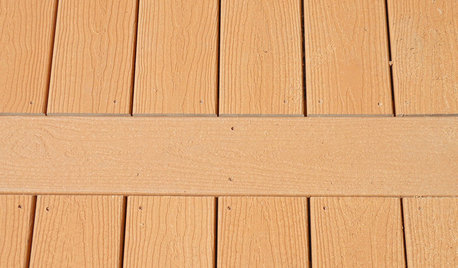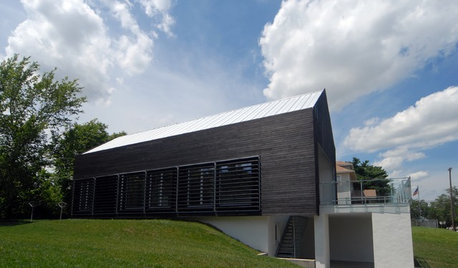Quince rot and insect damage
Morenito
11 years ago
Related Stories

EDIBLE GARDENSWhy Grow Quince? For Beauty, Fragrance and Old-Time Flavor
Delightfully perfumed fruit and lovely spring blossoms make this apple and pear cousin worth a spot in the garden
Full Story
GARDENING GUIDESSmall Carpenter Bees Are Looking for a Home in Your Plant Stems
Provide flowers and nesting sites in your garden for this beautiful, tiny, metallic blue wild bee — your plants will thank you
Full Story
FALL GARDENING7 Reasons Not to Clean Up Your Fall Garden
Before you pluck and rake, consider wildlife, the health of your plants and your own right to relax
Full Story
FARM YOUR YARDHello, Honey: Beekeeping Anywhere for Fun, Food and Good Deeds
We need pollinators, and they increasingly need us too. Here, why and how to be a bee friend
Full Story
MONTHLY HOME CHECKLISTSYour Spring Home Maintenance Checklist
When winter weather departs, it’s time to check for damage and prepare for warm days ahead
Full Story
DESIGN DICTIONARYComposite Lumber
Wood fibers and plastic combine to make a superwood that endures the elements
Full Story
EDIBLE GARDENSGarden BFFs? Why Your Vegetables Are Begging for Companion Plants
Foster friendships among plants for protection from pests, pollination support and color camaraderie
Full Story
MOST POPULAR33 Magic Household Cleaning Tips
Houzzers from around the world share their tips for transforming housework into child’s play
Full Story
REMODELING GUIDES'Yakisugi-ita' Is Setting the Siding World on Fire
Exterior wood siding created by a Japanese burning technique is now alighting in the Western world
Full Story
GARDENING GUIDESCreate a Fire-Safe Garden — With Style
Defend your home against wildfire with a well-planned mix of plants, materials and open space
Full StoryMore Discussions








larry_gene
MorenitoOriginal Author
Related Professionals
Simpsonville Landscape Architects & Landscape Designers · Cary Landscape Architects & Landscape Designers · Glassmanor Landscape Architects & Landscape Designers · Norton Shores Landscape Architects & Landscape Designers · Alexandria Landscape Contractors · Edinburg Landscape Contractors · Fort Myers Landscape Contractors · Lake Saint Louis Landscape Contractors · Melrose Park Landscape Contractors · New Providence Landscape Contractors · Pikesville Landscape Contractors · Pine Hills Landscape Contractors · Plainview Landscape Contractors · Plantation Landscape Contractors · Pompton Lakes Landscape ContractorsScott F Smith
MorenitoOriginal Author
Scott F Smith
larry_gene